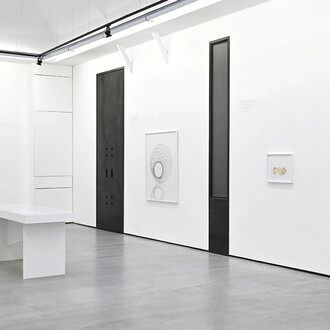Time present and time past
Are both perhaps present in time future
And time future contained in time past.
T. E. Eliot, Burnt Norton, The Four Quar
An artwork which is not temporary and transient since its conception (as a performance), or which is predisposed not to last (for example, Gustav Metzger’s paintings, treated with acids causing the corrosion of the surface) interact with the timeline of the observer essentially thanks to a dynamic of ‘out-of-jointness’. Beyond the time we need to observe/see an artwork, a period in which time of the artwork and time of the observer match because of the evident presence of both, a successful artwork (which is much more than an ordinary exercise) in its matter owns the roots of future. But the roots live together with the elements of past and of the present we’re passing through.
The continual being out-of-phase of the artwork about place and time (about here and now) causes an unexpected temporal expansion, since it acts in the world and with the observer following a constant repositioning, bringing forward the moment which is present and then quickly past. Perhaps we could assign to the artwork the same existential approach the philosopher Giorgio Agamben sees in what is contemporary: «The contemporary is not only the one who, perceiving the darkness of the present, grasps a light that can never reach its destiny; he is also the one who, dividing and interpolating time, is capable of transforming it and putting it in relation with other times» (G. Agamben, What Is the Contemporary, in What is an Apparatus? And Other Essays, Stanford University Press, 2009). If an artwork is not able to reveal something of the future since its genesis, it loses one of its major functions: to be subversive, able to question the observer or guiding him in another place/time.
The show In my beginning is my end compares the poetics of three different artists: each of them is invited to suggest to the observer artworks characterized by a particular conceptual, visual and expressive strength, to modify the timeline perception of the visitor by friction, repositioning or anticipation.
The title of the show comes from is the first line of East Cocker, the second of the Four Quartets written by T. S. Eliot. The exhibition tries to analyze how an artwork is an “apparatus” that gives interpretative possibilities and can be considered a sense creator, out-of-phase about the time container we called present, past or future. In its repeated challenge, the beginning becomes end and the end a new genesis and a beginning, over and over again. In a continuous loop of time progress and rearrangement.
















